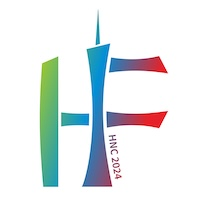Speaker
Description
Heavy quarkonia are ideal probes of the Quark-Gluon Plasma (QGP). $J/\psi$ is the most abundantly produced quarkonium state accessible experimentally and its suppression due to the color screening effect in hot and dense medium has been suggested as a signature of the formation of the QGP. Besides the screening effect, there are other mechanisms, such as the cold nuclear effects and charm quark recombination, which could affect the $J/\psi$ yield in heavy-ion collisions. Measurements of $J/\psi$ production at different collision energies will help to understand the interplay of these mechanisms. STAR has observed significant suppressions of the $J/\psi$ production at mid-rapidity in Au+Au collisions at $\sqrt{s_\mathrm{NN}}$ = 39, 62.4, and 200 GeV. However, the nuclear modification factor shows no significant collision energy dependence from SPS to RHIC top energy within large uncertainties.
In 2017, STAR took a large sample of 54.4 GeV Au+Au collisions and the statistics is more than ten times of the 39 and 62.4 GeV Au+Au data. In this talk, we will present new measurements of the inclusive $J/\psi$ production in Au+Au collisions at $\sqrt{s_\mathrm{NN}} = 54.4$ GeV. The collision energy and transverse momentum dependences of the nuclear modification factor will be presented. Physics implications of these results will also be discussed.
